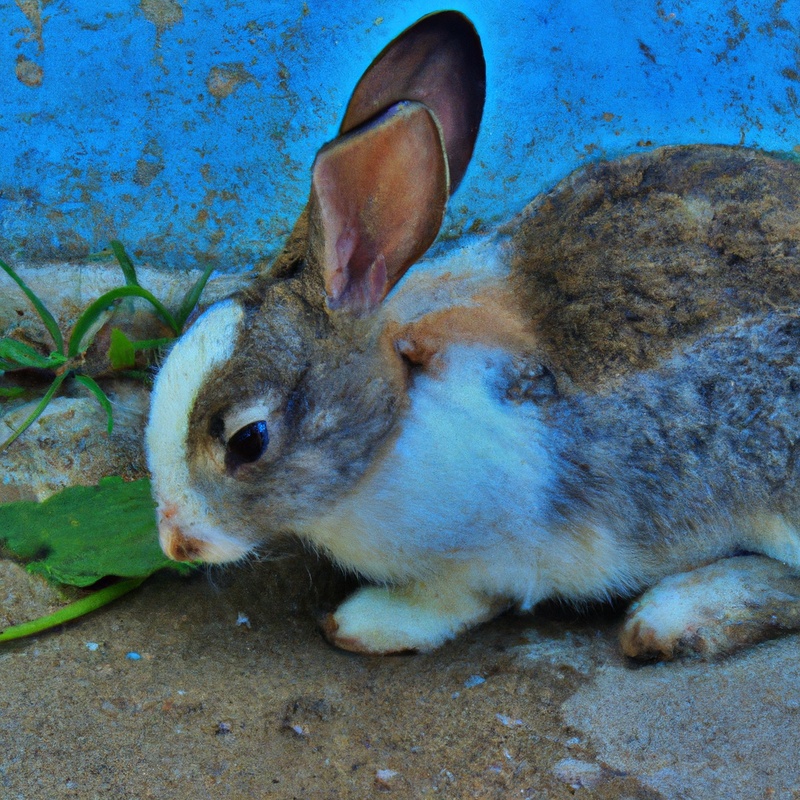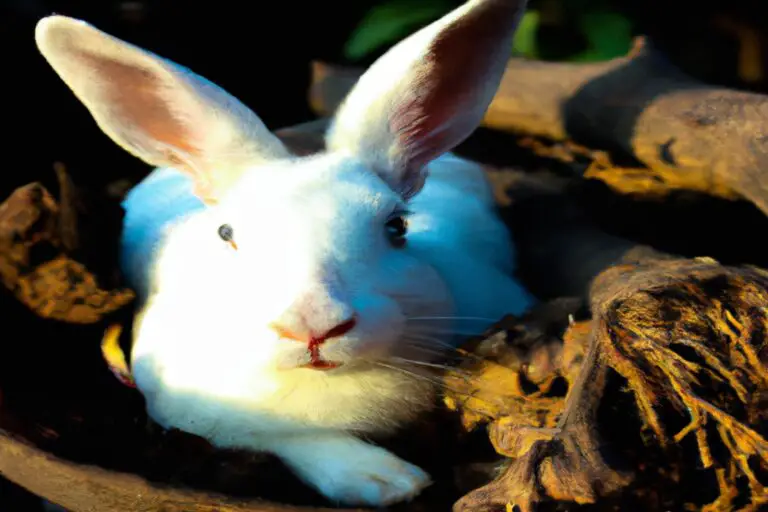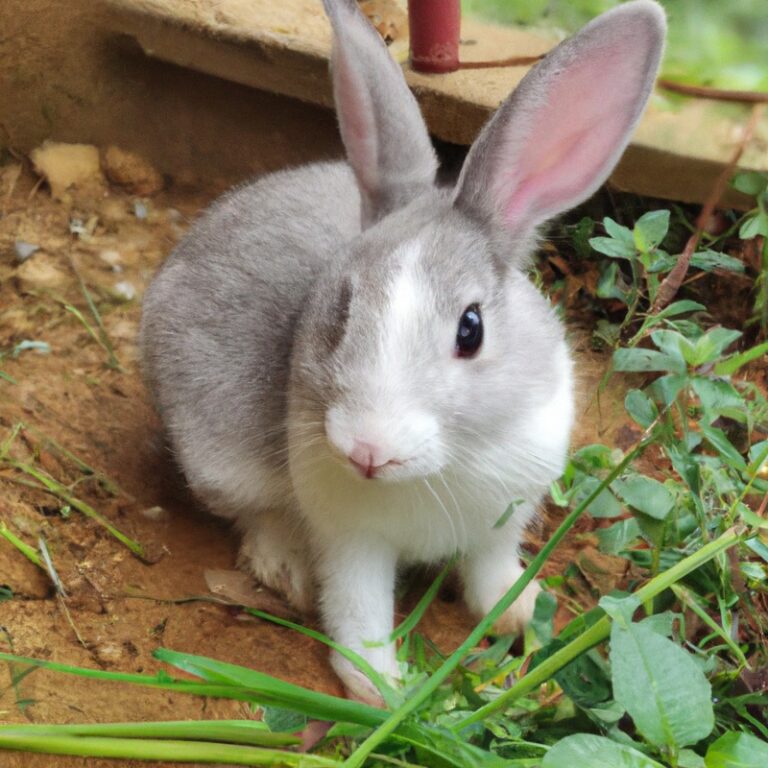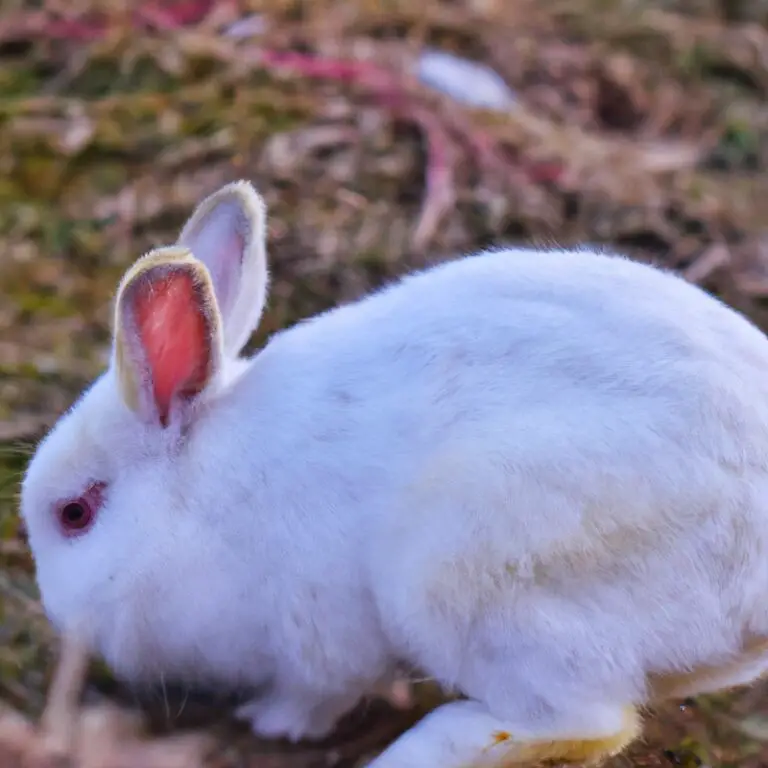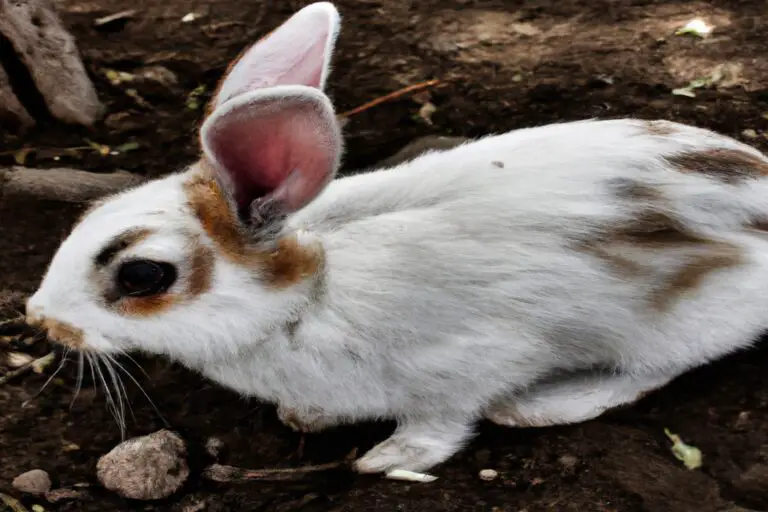Rabbit-Proofing Your Home: Tips For a Bunny-Safe Living Space
Key Takeaways:
- Secure all electrical cords to prevent rabbits from chewing on them.
- Keep all household plants out of reach, as many are toxic to rabbits if ingested.
- Store any toxic substances or cleaning products in a locked cabinet or high shelf.
- Provide plenty of chew toys and hiding spots to keep rabbits entertained and prevent destructive behavior.
Are you a proud bunny parent, or considering adding a fluffy friend to your family? If so, it’s essential to create a safe and secure environment for your furry companion.
Just like curious toddlers, rabbits love exploring their surroundings and can get themselves into trouble if not properly protected.
From household hazards to potential escape routes, rabbit-proofing your home is a vital step in ensuring the well-being and happiness of your bouncy buddy. In this blog, we’ll discuss the importance of rabbit-proofing, provide tips on creating a bunny-safe living space, and answer some commonly asked questions to help you become a pro at keeping your rabbits safe.
Get ready to hop into action and make your home a bonafide bunny haven!
| Aspect | Tip |
| Electrical Cords | Protect cords by using cable covers or hiding them behind furniture |
| Houseplants | Remove toxic plants or keep them out of reach |
| Furniture | Protect furniture from chewing by using bitter sprays or providing appropriate chew toys |
| Windows and Balconies | Install secure screens or mesh to prevent escapes or falls |
| Chemicals | Store cleaning products and chemicals in inaccessible cabinets |
Why Rabbit-Proofing Your Home is Important
Rabbit-proofing your home is important to keep your furry friend safe from potential hazards and accidents.
Protecting Your Rabbits from Household Hazards
To protect your rabbits from household hazards, it’s important to be aware of potential dangers in your home.
Keep electrical cords out of reach to prevent chewing and potential electrocution.
Secure toxic cleaning products and chemicals in cabinets or high shelves.
Avoid using toxic plants in your home or garden.
Ensure that windows and doors are securely closed to prevent escape or injury.
Regularly inspect your rabbit’s living space for any potential hazards and make necessary adjustments for your bunny’s safety.
Recognizing Common Household Hazards for Rabbits
Rabbits are curious creatures, so it’s important to be aware of potential household hazards that could harm them. Some common dangers include:
- Toxic plants: Certain plants like lilies, tulips, and azaleas can be poisonous to rabbits if ingested.
- Electrical cords: Rabbits love to chew, so make sure to cover or secure any exposed cords to prevent electric shock or injury.
- Cleaning products: Avoid using harsh chemicals near your rabbit’s living space, as they can be harmful when inhaled or ingested.
- Small objects: Rabbits can easily swallow small items, which can cause choking or intestinal blockages. Keep small objects out of their reach.
- Open windows and doors: Always supervise your rabbit when they’re near open windows or doors to prevent accidents or escapes.
Take the time to bunny-proof your home by removing hazards and creating a safe space for your furry friend. Regularly check your home for any new potential dangers to keep your rabbit happy and healthy.

Preventing Accidental Poisoning
Preventing accidental poisoning in your home is essential for the safety of your pet rabbit. Here are some tips to keep in mind:
- Store household chemicals and cleaning products out of reach, in cabinets or high shelves.
- Keep medications, both prescription and over-the-counter, securely stored away.
- Be cautious with houseplants, as some can be toxic to rabbits when ingested.
- Ensure that your rabbit’s chewing toys are free from any harmful substances.
- Supervise your rabbit when it’s out of its enclosure to prevent access to dangerous items.
Taking these precautions can greatly reduce the risk of accidental poisoning and help create a safe environment for your furry friend.
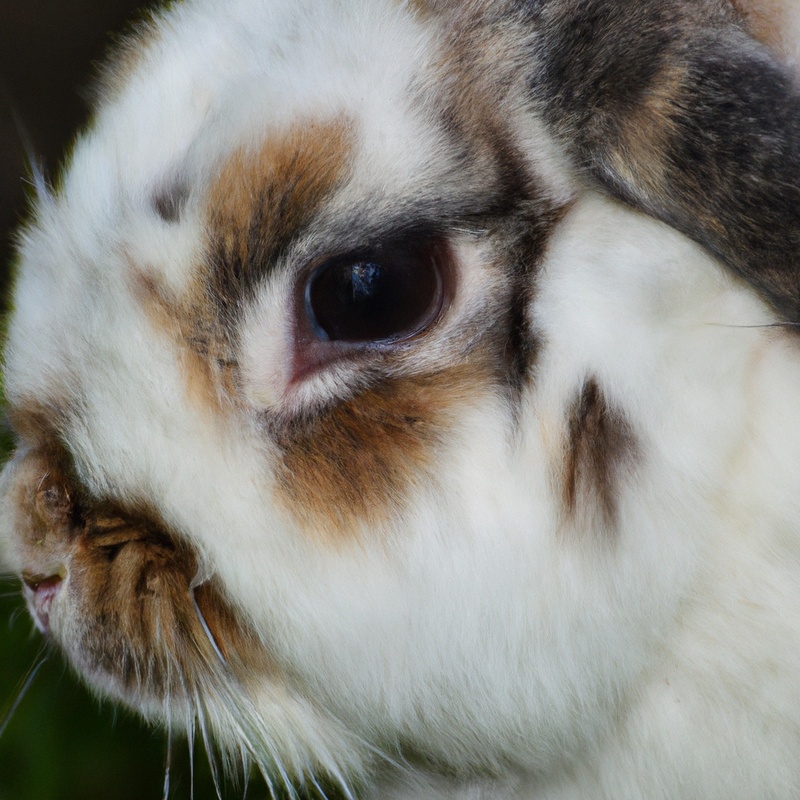
Identifying and Securing Toxic Plants
Identifying and securing toxic plants is essential for creating a safe environment for your bunny. Here are a few tips to help you with this:
- Research the common toxic plants: Some common plants like lilies, azaleas, and ivy can be harmful to rabbits. Look for a list of toxic plants and cross-reference it with the plants in your home or garden.
- Remove toxic plants from the reach of your bunny: If you have any toxic plants growing indoors, make sure they are placed in areas that your bunny cannot access. Consider elevated shelves or hanging baskets.
- Create a designated play area: If you have toxic plants in your garden, ensure your bunny has a designated play area where those plants are not present. This can be achieved by fencing off certain areas or keeping your bunny indoors.
- Consider alternative non-toxic plants: If you still want to have plants around your bunny, opt for non-toxic options like spider plants or Boston ferns. These can add greenery to your space without posing a risk to your furry friend.
Remember, the safety of your bunny should always be a top priority. By taking the time to identify and secure toxic plants, you can help ensure a bunny-safe living space.

Keeping Electrical Cords and Wires Out of Reach
To keep your bunny safe, it’s important to keep electrical cords and wires out of their reach.
Bunnies love to chew, and those cords can be dangerous if they’re gnawed on.
To prevent any accidents, be sure to secure cords and wires by using cord covers, tape, or hiding them behind furniture.
Another option is to use cord protectors, which are plastic tubes that encase the cords and prevent chewing.
By taking these precautions, you can create a bunny-safe living space.
Creating a Bunny-Safe Living Space
To create a bunny-safe living space, there are a few important steps you can take.
First, make sure to secure any loose or dangerous items that your bunny could chew on, such as electrical cords or toxic plants.
Second, provide plenty of hiding spots and safe toys for your bunny to play with.
Third, ensure that your bunny’s enclosure is escape-proof and offers plenty of space to hop around.
And finally, be mindful of any potential hazards in your home, such as open windows or doors, and take steps to prevent accidents.
Establishing a Rabbit-Friendly Room or Space
Creating a rabbit-friendly room or space is essential for the well-being and safety of your furry friend. Here are a few tips to consider:
- Remove hazards: Clear the area of any toxic plants, small objects, electrical cords, and chemicals that could be harmful to your rabbit if ingested.
- Provide hiding spots: Offer tunnels, boxes, or tents where your rabbit can retreat and feel secure.
- Secure wires and cables: Cover or hide cables to prevent your rabbit from chewing on them and potentially getting injured.
- Use safe flooring: Avoid slippery surfaces and opt for non-slip mats or carpeting to prevent your rabbit from losing traction and injuring their paws.
- Set up a litter box: Create a designated area with a litter box for your rabbit’s bathroom needs.
- Offer plenty of toys and enrichment: Provide a variety of toys, chewable items, and activities to keep your rabbit mentally stimulated and prevent boredom.
- Ensure proper ventilation: Ensure your rabbit’s room has good airflow to prevent the buildup of stale air and respiratory issues.
Remember, creating a rabbit-friendly space will help ensure that your furry friend is safe, happy, and able to exhibit their natural behaviors.
Ensuring Adequate Ventilation and Temperature Control
Adequate ventilation and temperature control are essential for creating a comfortable and safe living space for your rabbit. Make sure to provide good airflow in their enclosure, as poor ventilation can lead to respiratory issues.
Additionally, maintain a consistent temperature range between 60-70°F to keep your bunny healthy and prevent overheating or hypothermia.
Regularly check and adjust the ventilation and temperature in your rabbit’s area to ensure their well-being.
Providing Sufficient Space for Exercise and Mental Stimulation
To ensure your rabbit’s well-being, providing sufficient space for exercise and mental stimulation is essential.
A roomy enclosure or free-roaming area allows bunnies to hop and play, which helps maintain their physical health.
Offering a variety of toys, tunnels, and hiding spots keeps their minds active and engaged.
Regular interaction, exploration, and playtime with your furry friend also contribute to their overall mental stimulation.
By creating a bunny-friendly living space, you’ll be promoting both their physical and mental health.
Selecting the Right Flooring Materials
Selecting the right flooring materials for your home is important in creating a safe and comfortable environment for your bunny.
Here are a few key considerations:
- Opt for non-slip surfaces to prevent accidents and injuries. Materials like hardwood, laminate, or cork are good options.
- Avoid carpets or rugs, as they can trap urine and become breeding grounds for bacteria. If you must have carpeting, choose low-pile options that are easy to clean.
- Consider using vinyl or linoleum flooring, as they are durable, easy to clean, and resistant to scratches.
- Make sure the flooring is non-toxic. Some materials, such as certain types of vinyl, may emit harmful chemicals. Look for eco-friendly, pet-safe options.
By keeping these factors in mind, you can create a bunny-safe living space that is both practical and comfortable for your furry friend.
Choosing Safe and Comfortable Bedding Options
When choosing bedding options for your rabbit, it’s important to prioritize safety and comfort. Opt for materials that are non-toxic and free of any harmful chemicals.
Avoid bedding made from cedar or pine, as the aromatic oils can be harmful to rabbits.
Instead, consider options like paper-based bedding, hay, or straw. Make sure the bedding is soft and cozy, allowing your rabbit to burrow and nest comfortably.
Regularly check and clean the bedding to maintain a healthy living space for your furry friend.
Securing Furniture and Belongings
Securing furniture and belongings is essential to create a bunny-safe living space.
Rabbits love to chew, and they can damage your furniture, cords, and other household items.
To keep everything safe, consider these tips:
- Cover electrical cords with cord protectors or hide them behind furniture.
- Secure loose items, such as small decor or plants, out of the reach of your bunny.
- Use barriers or gates to prevent access to areas with fragile or dangerous items.
- Provide your rabbit with appropriate chew toys and distractions to redirect their chewing behavior.
By taking these precautions, you can ensure a safe and comfortable environment for both you and your furry friend.
Protecting Cords and Cables
To protect your cords and cables from bunny nibbles, there are a few simple steps you can take.
First, consider using cable protectors or cord covers to keep them out of reach.
Another option is to use PVC piping or cord hiders to create a barrier.
Make sure to secure any loose cords against the wall or furniture to prevent your rabbit from reaching them.
And finally, try to keep cords and cables hidden or tucked away whenever possible.
Safeguarding Furniture from Chewing and Scratching
To safeguard your furniture from chewing and scratching by your bunny, there are a few simple steps you can take. Firstly, provide your rabbit with appropriate alternatives, such as chew toys and scratching posts.
This will redirect their natural instincts and help protect your furniture.
Secondly, consider using bitter apple spray or other taste deterrents on the areas you want to protect. This will discourage your bunny from chewing or scratching.
Lastly, if necessary, you can cover or block off furniture with protective barriers or materials.
Storing Hazardous Items and Chemicals Securely
To ensure the safety of your rabbits, it is important to store hazardous items and chemicals securely.
Here are some tips:
- Keep all toxic substances out of reach: Store cleaning products, pesticides, and other hazardous items in locked cabinets or high shelves.
- Ensure proper labeling: Clearly label all containers to avoid confusion and accidental ingestion.
- Store in original containers: Do not transfer chemicals into different containers, as it may lead to misidentification and accidents.
- Proper disposal: Dispose of hazardous waste properly according to local regulations to prevent environmental contamination.
- Secure electrical cords: Keep electrical cords out of your rabbit’s reach to prevent chewing and potential electrocution.
Taking these precautions will help create a bunny-safe living space and reduce the risk of accidents or poisoning.
Keeping Valuables and Breakables Out of Reach
To keep your home safe for your bunny, it’s important to keep valuables and breakables out of reach.
Rabbits are curious creatures and love to explore, so it’s best to move any fragile items or cherished belongings to higher ground.
You can also use baby gates or create designated play areas to limit their access.
Be sure to secure any loose cables or cords as well, as rabbits may chew on them and cause harm.
By taking these precautions, you’ll create a bunny-friendly space and protect your valuables.
Preventing Escape and Ensuring Outdoor Safety
Preventing your rabbit from escaping and ensuring their safety outdoors is vital. Here are some tips to help you keep your bunny secure and protected:
- Secure your outdoor space: Make sure your rabbit’s outdoor enclosure is secure and escape-proof. Use durable fencing material and ensure there are no gaps or holes that your rabbit can squeeze through.
- Provide supervision: When your bunny is enjoying outdoor time, always keep an eye on them. This will help you prevent any potential escapes and keep them safe from predators or other hazards.
- Secure the hutch or cage: If your rabbit has a hutch or cage in the outdoor area, double-check that it is securely fastened and has no loose parts that can be broken or opened.
- Avoid toxic plants: Be aware of any toxic plants in your outdoor space that could harm your rabbit. Remove or keep them out of reach to ensure your bunny doesn’t accidentally ingest anything harmful.
- Protect from predators: If you live in an area with predators like foxes or birds of prey, take necessary precautions to protect your rabbit. Use secure enclosures or covered runs to keep them safe from potential threats.
Remember, your rabbit’s safety should always be a top priority. Taking these measures will give you peace of mind knowing that your furry friend is safe and secure while enjoying the outdoors.
Creating a Secure Outdoor Enclosure or Run
Creating a secure outdoor enclosure or run is essential for ensuring the safety and well-being of your rabbits. Here are a few tips to help you create a bunny-safe space:
- Choose a suitable location: Find an area that provides shade, protection from extreme weather conditions, and is secure from potential predators.
- Use secure fencing: Opt for sturdy wire mesh or fencing material that is designed specifically for rabbits. Make sure the gaps are small enough to prevent them from escaping or predators from entering.
- Check for escape routes: Inspect the enclosure regularly to ensure there are no holes, gaps, or digging opportunities for your rabbits to escape. Secure any openings or burrows that they may try to exploit.
- Provide shelter: Install a hutch, shed, or sturdy shelter inside the enclosure where your rabbits can retreat to during bad weather or for some privacy.
- Remove toxic plants: Ensure the enclosure is free from any plants that may be toxic to rabbits. Research which plants are safe for rabbits and remove any that pose a risk.
- Create enrichment: Add tunnels, toys, hiding spots, and elevated platforms to keep your rabbits mentally stimulated and entertained.
Remember, a secure outdoor enclosure or run provides your rabbits with a safe space to enjoy fresh air, exercise, and explore while minimizing the risks of escape or predation.
Checking for Gaps and Holes in Fences
To ensure the safety of your rabbit, it’s important to check for gaps and holes in your fences.
These openings can be potential escape routes for your bunny, or even allow predators to enter your yard.
Take the time to carefully inspect your fences, looking for any cracks, gaps, or holes that a small rabbit could squeeze through.
Seal any openings with sturdy materials like wire mesh or wood panels.
Don’t forget to also check the bottom of your fence, as rabbits are skilled diggers and can create tunnels underneath.
You can prevent this by burying a portion of the fence underground or placing rocks or bricks along the fence line.
Regularly checking for and fixing these gaps and holes will provide a secure living space for your furry friend.
Protecting Rabbits from Predators
Rabbits are prey animals, and protecting them from predators is essential for their safety. Here are some tips to help keep rabbits safe:
- Housing: Ensure that your rabbit’s hutch or enclosure is secure and predator-proof. Use sturdy materials and consider adding a lock to the door to prevent predators from gaining access.
- Fencing: Install a secure fence around the rabbit’s outdoor area to keep out larger predators such as dogs and foxes. Make sure the fence extends below ground to prevent burrowing.
- Cover: Provide your rabbit with cover, such as shrubs or shelter, to give them a safe hiding spot from aerial predators like hawks and owls.
- Supervision: Never leave your rabbit unattended outdoors. Keep a close eye on them to prevent potential predator attacks.
- Scents: Avoid leaving strong scents near your rabbit’s living space, as predators may be attracted by the smell.
- Nighttime safety: Consider bringing your rabbit indoors at night or providing them with a secure, predator-proof enclosure to keep them safe when predators are most active.
Remember, safeguarding your rabbit from predators is crucial for their well-being and ensuring they live a happy and secure life.
Avoiding Harmful Plants in the Yard
To make sure your yard is safe for your bunny, it’s important to avoid planting harmful plants.
Some common plants that can be toxic to rabbits include azaleas, lilies, daffodils, and rhododendrons.
It’s also best to steer clear of plants with thorns or prickles, as they can injure your bunny.
Instead, opt for bunny-friendly plants like grass, clover, and vegetables.
Regularly inspect your yard for any potential hazards and remove them promptly to keep your bunny safe.
Providing Enrichment and Safe Toys
To keep your rabbit happy and engaged, it’s important to provide them with enrichment and safe toys. Here are a few tips:
- Offer a variety of toys: From chew toys and puzzle toys to tunnels and balls, provide a range of options to keep your bunny entertained.
- Ensure safety: Make sure the toys you provide are rabbit-safe and free from any small parts or toxic materials.
- Rotate toys: Keep things interesting by regularly rotating their toys, so they don’t get bored.
- DIY options: You can also make homemade toys, such as cardboard boxes or paper towel tubes, to provide inexpensive entertainment.
Remember, providing enrichment and safe toys is essential for your rabbit’s mental and physical well-being.
Promoting Mental Stimulation and Physical Exercise
Promoting mental stimulation and physical exercise is essential for the well-being of your rabbit.
Regular interaction with toys and puzzles can provide mental stimulation, keeping your bunny engaged and preventing boredom.
Encourage physical exercise by providing ample space for your rabbit to hop and jump.
Consider setting up a playpen or a secure outdoor area where your rabbit can explore and stretch its legs.
Regular exercise not only keeps your rabbit physically fit, but it also helps prevent obesity and related health issues.
Choosing Safe and Appropriate Chew Toys
When selecting chew toys for your rabbit, it’s important to prioritize safety and appropriateness. Look for toys made from natural materials like hay, wood, or untreated wicker.
Avoid toys with small parts that could be swallowed or potential choking hazards.
Opt for toys that promote dental health, such as untreated wooden blocks or toys made specifically for rabbits. Remember to rotate toys regularly to keep your bunny stimulated and engaged.
Regularly inspect toys for any signs of wear or damage and replace them as needed.
Rotating Toys to Prevent Boredom
Rotating your bunny’s toys is a great way to keep them stimulated and prevent boredom. By regularly swapping out toys, you’re providing fresh and exciting experiences for your furry friend.
This can help prevent destructive behavior and keep them mentally and physically engaged.
Consider having a selection of toys and switch them out every few days to keep things interesting. Some popular bunny toys include puzzle toys, cardboard tubes, and untreated wooden blocks.
Don’t forget to supervise playtime to ensure safety.
Frequently Asked Questions (FAQs)
Can I rabbit-proof my entire house or should I designate a specific area?
You can rabbit-proof your entire house or designate a specific area – it depends on your preference and the needs of your bunny.
Rabbit-proofing the entire house can be a larger undertaking, but it allows your rabbit more freedom to explore.
Designating a specific area, like a room or playpen, can be easier to manage and control.
Consider factors such as the size of your house, the amount of time you have to supervise, and your rabbit’s behavior when deciding which option works best for you.
How do I protect my rabbits from chewing on furniture?
To protect your rabbits from chewing on furniture, there are a few simple steps you can take:
- Provide plenty of chew toys: Make sure your rabbits have a variety of safe chew toys to keep them occupied and satisfy their natural urge to chew. This will help divert their attention away from the furniture.
- Block access to furniture: Use baby gates or barriers to restrict your rabbits’ access to areas where they can easily reach furniture. This will prevent them from getting close enough to chew on it.
- Use deterrents: You can try using bitter apple spray or pet-safe deterrent sprays on the furniture. These products create a bitter taste that rabbits dislike, which can discourage them from chewing.
Are there any plants that are dangerous for rabbits?
Yes, there are several plants that can be dangerous for rabbits.
Some common ones include lilies, daffodils, tulips, azaleas, and rhododendrons.
These plants can cause various health issues for rabbits if ingested, such as gastrointestinal upset, diarrhea, or even organ damage.
It’s important to ensure that your rabbit’s living space is free from these toxic plants to keep them safe and healthy.
Can rabbits be kept outdoors safely?
Yes, rabbits can be kept outdoors safely, but it requires careful consideration and proper precautions. Here are some important factors to keep in mind:
- Shelter: Provide a secure and predator-proof hutch or enclosure for your rabbit to protect them from extreme weather conditions and potential predators.
- Space: Ensure your rabbit has enough space to move around comfortably. A spacious enclosure allows for exercise and prevents boredom.
- Protection: Protect your rabbit from direct sunlight, strong winds, and excessive heat or cold. Provide shade, water, and insulation as needed.
- Security: Make sure the outdoor area is escape-proof, with sturdy fencing or wire mesh buried to prevent digging. Check regularly for any potential hazards or escape routes.
- Monitoring: Regularly check on your rabbit to ensure their health and well-being. Look for signs of stress, illness, or discomfort.
While outdoor living can be enriching for rabbits, it’s important to remember that they also need regular human interaction and socialization. Ensure your rabbit receives enough attention, love, and care, even when they are outdoors.
What are some safe toys and enrichment activities for rabbits?
Rabbits enjoy a variety of safe toys and enrichment activities to keep them entertained and engaged. Here are some ideas:
- Chew toys: Rabbits have a natural instinct to chew, so providing them with safe chew toys made of untreated wood or cardboard can help keep their teeth healthy.
- Puzzle toys: Interactive puzzles and treat dispensers can stimulate a rabbit’s mind while providing them with a tasty reward.
- Digging boxes: Fill a shallow box with shredded paper or safe bedding material for your rabbit to dig in. This mimics their natural behavior and keeps them mentally stimulated.
- Tunnel systems: Rabbits love to explore and hide in tunnels. You can create a tunnel system using cardboard tubes or purchase collapsible tunnels from pet stores.
- Hay feeders: Using a hay feeder not only provides rabbits with essential nutrition but also encourages foraging behavior, keeping them occupied for longer periods.
Remember to always supervise your rabbit during playtime and ensure that any toys or activities are safe and non-toxic.
Final Verdict
Rabbit-proofing your home is crucial for creating a safe and enjoyable living space for your furry friends. By recognizing common household hazards, preventing accidental poisoning, securing toxic plants, and keeping electrical cords out of reach, you can protect your rabbits from potential dangers.
Creating a bunny-friendly room with adequate ventilation, space for exercise, and safe flooring and bedding options is essential for their well-being.
Additionally, securing furniture and belongings, preventing escape and ensuring outdoor safety, and providing enrichment and safe toys are key factors to consider. By implementing these tips, you can create a bunny-safe living space that promotes their health, happiness, and overall well-being.

